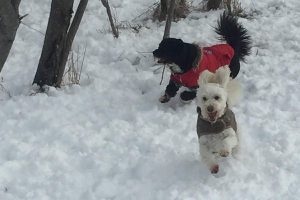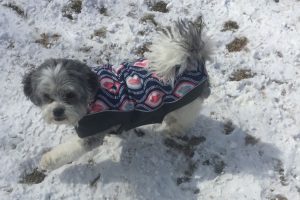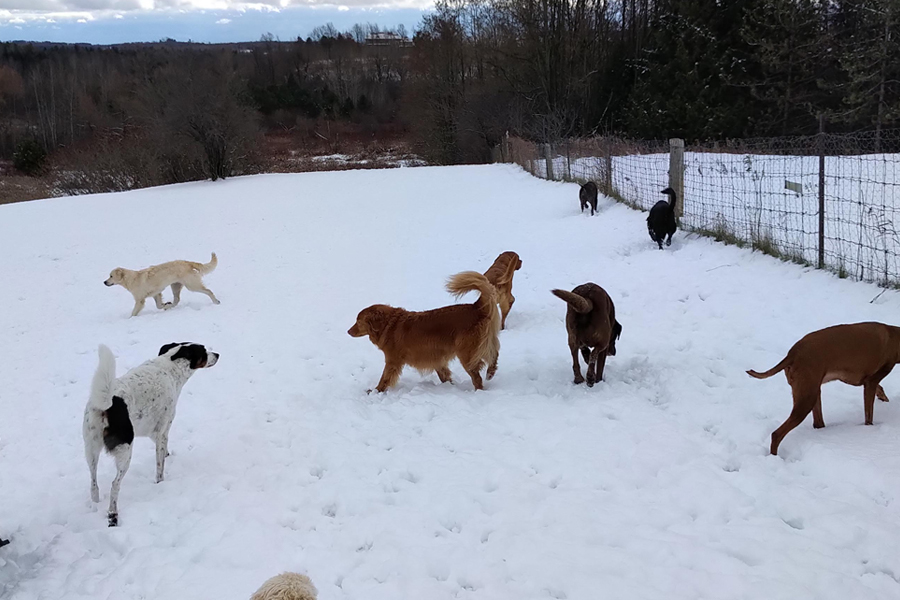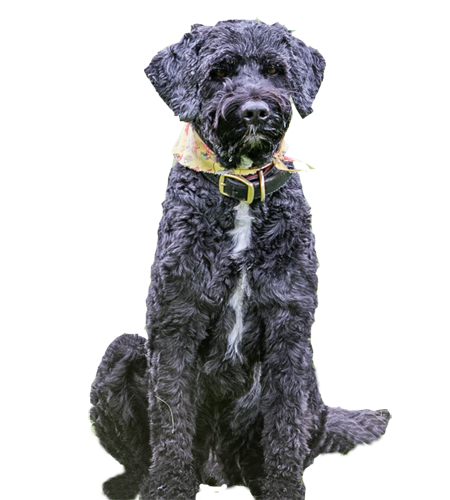Bundle up this winter
Leave your dog’s fur longer during the winter to keep them warm. If you have a puppy, kitten, or a shorthair-breed pet, consider purchasing a coat or sweater to cover their back and underside — fleece is a great option!
Car safety
Just like when it’s hot out, don’t leave your pet in your car when it’s particularly cold out. Your car can act like a refrigerator as it holds in the cold. When in doubt, leave your pet at home when you know you’ll have to leave them unattended in the car.
Troublesome toxins
Keeping walkways walkable and driveways drivable in the winter often requires the use of salt or chemical de-icers which are
poisonous to pets. Try to avoid contact with de-icers when with your pet, and wipe them down with a wet towel then completely dry them off after outside play to remove any chemicals they could’ve come in contact with. Remember, if you’re putting antifreeze in your car, use a pet-friendly or propylene glycol option.
Baby, it’s cold outside
While many pets have fur to protect them from the cold, dogs and cats need plenty of time to acclimate to the colder weather. Keep your pets indoors as much as possible, especially cats and small, sick, or short-haired dogs. Winter is a great time to look into indoor training or obedience classes, like agility and flyball, so your dog can get plenty of mental and physical exercise.


Protect those paws!
The cold snow and ice can be a pain in the paw. Make sure to wash and completely dry your pet’s paws after time outside (especially if they came in contact with any salt or chemical de-icer). Look out for snow and encrusted ice that can cause cracked, bleeding paws. If you notice any bleeding, call your veterinarian. Petroleum jelly is a safe way to protect those paws—you can also look into dog boots.
Winter diet
In the cold winter, your pet will burn more calories to keep warm. If your pet exercises outdoors a lot, think about increasing their food intake by a little bit. You should be able to feel, but not see, your pet’s ribs.
Tips from our Director of Veterinary Services, Denise Petryk, DVM: Depending on where you live, a change in season can result in a dramatically different exercise schedule and therefore a corresponding change in the number of calories your pet needs to consume. It takes more energy in cold weather to keep your body temperature regulated, so sometimes additional calories are necessary. For example, if you spend more time outside with your dog walking in the cooler weather, your pet may need more food. Similarly, if your dog spends some time in an outside run or kennel with falling temperatures, they may need more food. However, if you and your pet are spending more time curled up by a warm fire and are only playing indoor games of fetch, they may require less food.
Catnaps and cars
In the cold winter, outdoor cats in the area may find the engine block under the warm hood of your car to be a great spot to snooze. Before you start your car in the morning, bang on your hood a little to wake up any sleeping cats.
Source: Originally Published in Trupanion.com



